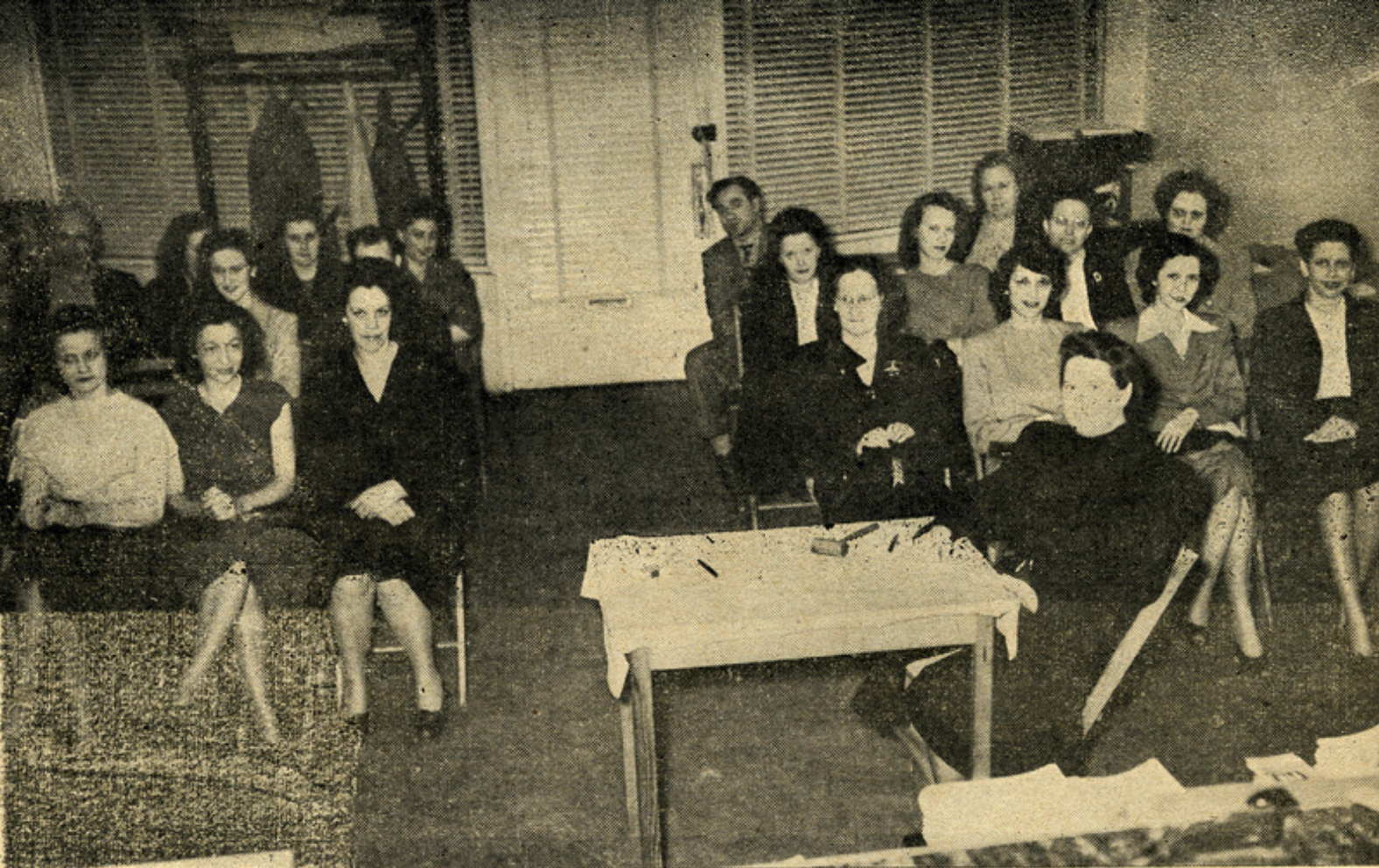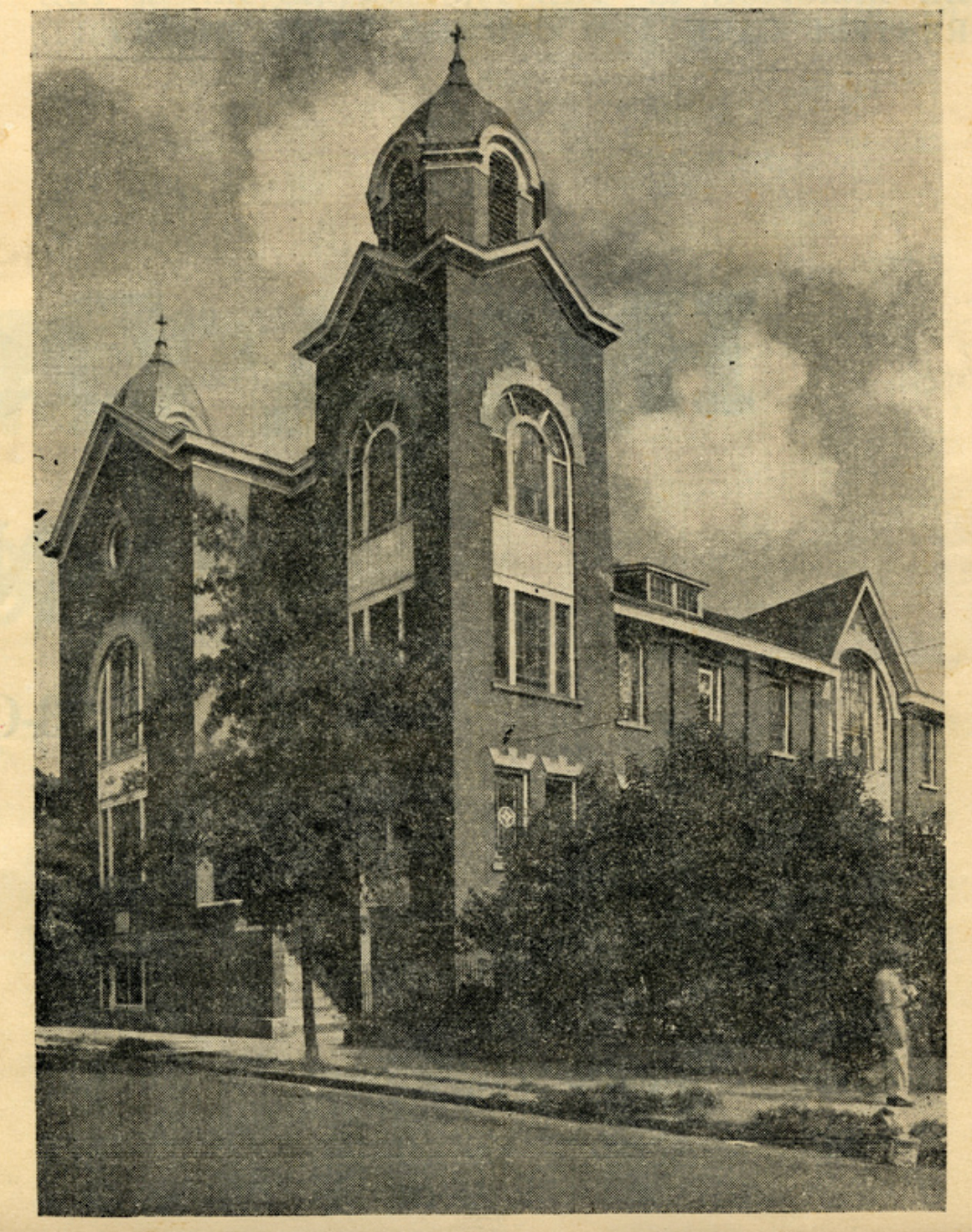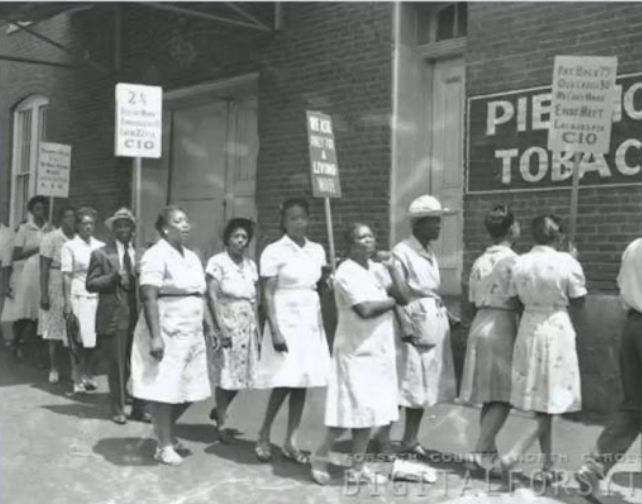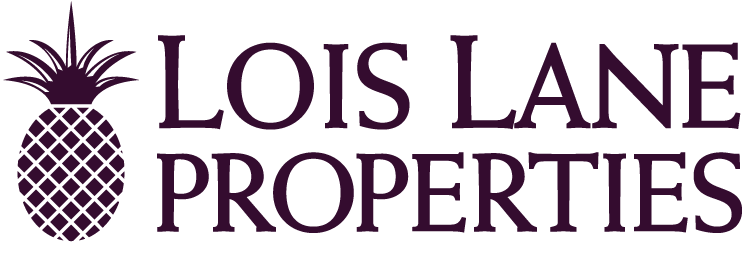Published September 2, 2025
Labor Unions: The Folks who Brought You the Weekend

My friends know how close I was to my great Aunt Mae. She was a hard worker—strong-willed but always fair—and she single-handedly raised my father. When I was little, I spent summers and holidays with her in the upstairs apartment she rented for years at 86 Drake Street, and oh boy did we have the best times together.
Aunt Mae worked at the Cigar Factory for many years, retiring in the mid-1960s. Later in life, I was so proud to learn she had been part of the 1945 labor strike. She’s pictured here at a meeting of Local 15, third from the left in the front row.

Local 15 union meeting, Charleston, South Carolina, detail image from American Tobacco Worker, June 1948, courtesy of the South Carolina Historical Society. Though African American women made up the majority of strikers, some Black men and White workers also joined the strike, and many continued to support Local 15 afterwards.
Local 15 of the Food, Tobacco, and Allied Workers

Former Morris Street Baptist Church building, Charleston, South Carolina, ca. 1950, courtesy of the Avery Research Center for African American History and Culture. In 1944, FTA-CIO Local 15 held its first integrated meeting at the Morris Street Baptist Church, a historically Black congregation. The building was destroyed by a fire in 1964.
On October 22, 1945, more than one thousand of the approximately 1,400 employees at Charleston’s Cigar Factory walked out in one of the most significant labor strikes in the city’s history. The strikers demanded back pay they had been promised, a twenty-five-cent hourly raise, paid medical benefits, a closed union shop, and protections against racial discrimination in hiring and firing. While the majority were African American women, they were joined by some Black men and White workers who sought to strengthen their cause by linking it with strikes underway in Philadelphia and Trenton.

While the American Tobacco Company’s owners were “comfortably cushioned on their pile of unprecedented wartime profits,” Black women on the factory floor saw the strike as a chance to fight for something more meaningful—fair pay and lasting job security, anchored by clear non-discrimination policies. For White women and male union members, cooperation across racial lines offered the opportunity to increase their bargaining power by presenting a united front. This new spirit of solidarity became visible only days into the strike, when Local 15 convened its first interracial meeting at Morris Street Baptist Church on October 26. Since its chartering in 1944, Local 15 had held separate meetings for White and Black members, making this gathering a historic milestone. In a union newsletter, African American representative Marie Hodges celebrated the moment, declaring that Local 15 was “one of the world’s greatest institutions in the breaking down of racial, religious, and national prejudices.”
Yet beneath these promising signs of cooperation, deep racial and gender divisions remained. The most lucrative jobs in the factory—skilled machinist positions—were reserved exclusively for White men. Benefiting from entrenched patterns of discrimination, many of these workers resisted efforts toward interracial solidarity, viewing civil rights activism and labor equality as threats to their economic advantage and influence on the shop floor. Their reluctance revealed the limits of White worker support, underscoring how fragile interracial unity remained even as the strike pressed forward.
We Shall Overcome

The strike began with a large group of mostly Black workers who picketed outside the factory from morning until evening, holding placards and voicing their demands. The Charleston Evening Post described young women on the picket line as moving with a “sprightly step,” laughing and smiling at passersby, while older workers lifted their voices in hymns and spirituals. Among them was Lucille Simmons, an African American veteran of the factory, who went door to door across Charleston urging neighbors to stand behind the strike. With her strong, resonant voice, she transformed the spiritual “I Will Overcome One Day” into “We Will Overcome,” a song that soon became the strikers’ closing anthem at the end of each day. Union activist Lillie Mae Marsh Doster later remembered Simmons’ moving performance as “almost like a prayer of relief” for the hardships endured by Cigar Factory workers, who joined together in the refrain, “we will win our rights someday.” "We will Overcome" led to the popularization of the civil rights anthem "We Shall Overcome".





